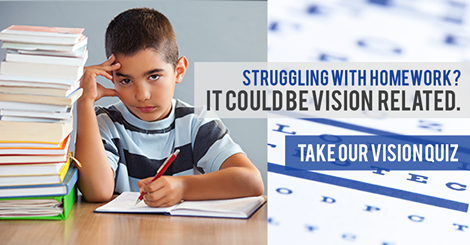
Surgery is usually recommended by physicians for the treatment of strabismus (eye turns, lazy eyes). However, surgery only attempts to deal with the symptom of the problem (i.e. the eye turn) rather than the cause.
In the majority of cases of strabismus not caused by trauma, strabismus is caused by the brain’s inability to use the eyes together as a team, not weak or overactive eye muscles. This inability is usually caused by genetics or developmental problems. Since the brain of this individual does not have the ability to know how to use the eyes together as a team correctly, it avoids double vision by turning or blurring an eye so that only one eye is being used at a time. However, surgery attempts to overcome this adaptation by altering the length of the eye muscles to cosmetically straighten the eyes. The brain will continue to try to avoid double vision after surgery, which is why several surgeries are usually performed on each strabismus patient as the eye generally turns again. If the eyes are eventually straightened cosmetically to a certain degree, the brain usually continues to use only one eye at a time.
Neuro-Visual Rehabilitation works with the cause of the problem (the inability of the brain to use both eyes together as a team) rather than the symptom (the eye turn). A therapy program is designed to train the brain to correctly use the eyes together as a team, thereby eliminating the need for the brain to turn an eye to avoid double vision. Because the root cause is being treated, Neuro-Visual Rehabilitation not only straightens the eyes but also allows both eyes to work together as a team which creates more comfortable and efficient vision.
What if I see 20/20 with or without corrective lenses?
Many people with visual problems including strabismus and amblyopia can pass a visual acuity, or 20/20, screening. There is more to vision than visual acuity. Eyesight is the ability to "see" small objects at a given distance with or without lens correction. Vision is a learned skill that includes eye tracking, eye teaming, focusing and perceptual skills. Both the eyes and the brain must work together to control the ability to interpret, identify, and make sense of what is seen by the eye.
What is my next step?
Call Coleman Vision for a complete Neuro-Visual Performance Analysis. The evaluation is a requires a recent (no more than six months old) general eye health exam from your family eye doctor prior to your evaluation appointment. Coleman Vision Improvement Center can do this exam if you do not already have a family eye doctor. A simple phone call or e-mail is all you need for more information or to set up an appointment with Coleman Vision. A Neuro-Visual Rehabilitation program designed by a developmental optometrist can make a lifetime of changes in the visual systems of persons with eye turns and lazy eye.
If you have a child with special needs, we can help. Learn how.
